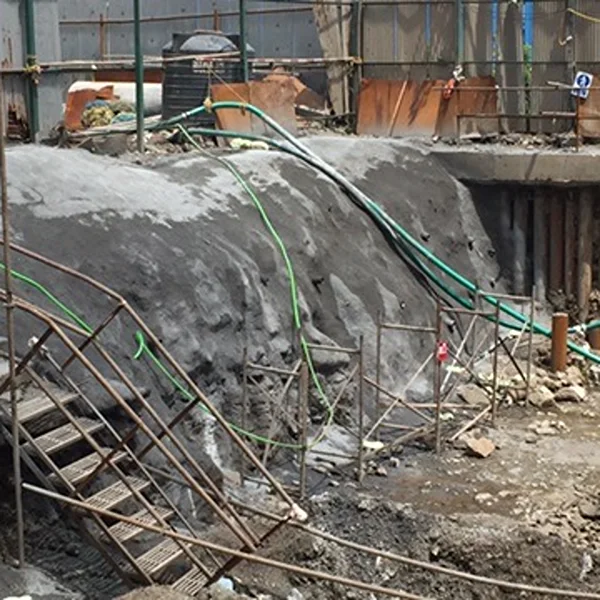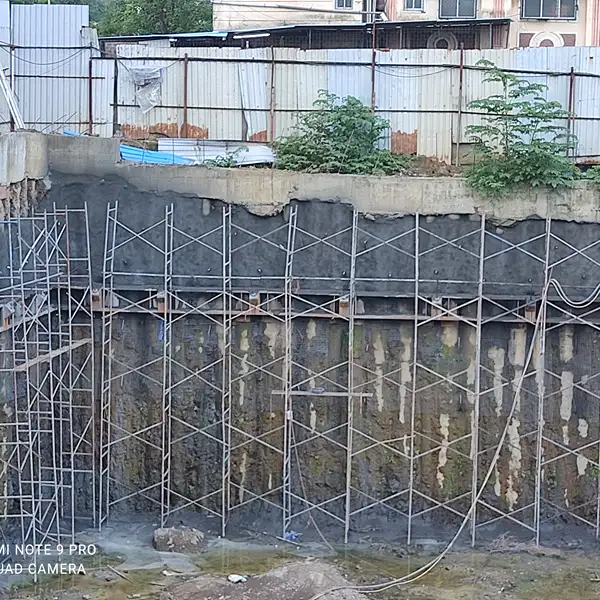
How Soil and Rock Anchoring Secures Foundations & Prevents Landslides
When it comes to constructing safe buildings, bridges, highways, and other infrastructure, one crucial factor often goes unnoticed—the stability of the ground beneath us. Loose soil, weak rock layers, and unstable slopes can lead to disasters like landslides, foundation failures, and structural collapses. This is where soil and rock anchoring comes into play. At ME Engineers, we specialize in advanced anchoring solutions that secure foundations, prevent landslides, and ensure your projects stand strong for decades.
What is Soil and Rock Anchoring?

Soil and rock anchoring is a technique used to stabilize soil, rock, and slopes by inserting strong, durable anchors into the ground. These anchors hold the earth in place, preventing movement, erosion, or collapse. Think of it like putting pins in a sandcastle to make it stay firm even when water or wind threatens it.
Anchoring can be used in various construction scenarios, including:
- Building foundations
- Retaining walls
- Highway slopes
- Bridge abutments
- Tunnel construction
How Soil and Rock Anchors Work?
The process involves three main steps:
- Site Assessment:
Engineers at ME Engineers inspect the soil and rock conditions to determine the strength, composition, and risk factors. Understanding the ground is crucial for designing effective anchors. - Anchor Installation:
Anchors are drilled or inserted into the soil or rock. They can be steel rods, cables, or reinforced bars depending on the load and terrain. Once in place, they are grouted or tensioned to provide maximum strength. - Load Distribution and Stabilization:
Anchors transfer the structural load from buildings, walls, or slopes into the stable ground layers. This prevents landslides, erosion, or settlement, ensuring the safety and longevity of structures.
Pro Tip: ME Engineers use cutting-edge techniques like soil nailing, rock bolting, and micropiling to ensure optimal stability in even the most challenging terrains.
Why Anchoring is Essential for Foundations?
Foundations are only as strong as the ground they sit on. Weak soil can lead to:
- Uneven settling of buildings
- Cracks in walls and floors
- Collapsing retaining walls
- Costly repairs and project delays
Anchoring reinforces the foundation, making it resistant to movement and extreme weather conditions. In fact, studies show that properly anchored slopes reduce landslide risks by up to 80% (Source: International Journal of Geotechnical Engineering, 2022).

Preventing Landslides with Anchoring
Landslides are sudden and destructive events that can occur on hills, highways, and construction sites. Soil and rock anchors act as safety belts for slopes, holding loose material in place. By reinforcing weak slopes and transferring loads to deeper stable layers, anchors can prevent disasters before they happen.
Real-world impact:
- In India, landslides cause over 1,000 deaths annually and damage thousands of homes (Source: National Disaster Management Authority, India).
- Anchoring solutions by ME Engineers have stabilized slopes along major highways and riverbanks, reducing landslide risks and saving communities.

Types of Anchors Used by ME Engineers
- Soil Anchors: Ideal for soft or loose soil.
- Rock Anchors: Perfect for hard rock formations.
- Micropiles: Small diameter piles for weak or compact sites.
- Soil Nailing: Using steel bars to reinforce slopes.
- Rock Bolting: Drilling bolts into rocks to prevent movement.
Each solution is customized based on site conditions, ensuring maximum safety and cost-effectiveness.
Benefits of Soil and Rock Anchoring
- Strengthens foundations and structures
- Prevents landslides and slope failures
- Reduces maintenance and repair costs
- Enhances safety for people and properties
- Ensures long-term durability of infrastructure
By choosing ME Engineers, you gain access to expert consultation, cutting-edge technology, and proven results across Mumbai, Maharashtra, and other regions.
FAQs About Soil and Rock Anchoring
Q1: Why is soil anchoring important for construction?
A1: Soil anchoring prevents ground movement, reduces the risk of foundation failure, and ensures structures remain safe during natural events like landslides or heavy rains.
Q2: How long do anchors last?
A2: With proper installation and materials like corrosion-resistant steel, anchors can last 50+ years, offering long-term safety.
Q3: Can anchoring be used on hills and highways?
A3: Yes! Anchoring is widely used for slope stabilization along highways, bridges, and hilly terrains to prevent accidents and structural damage.
Q4: How much does soil or rock anchoring cost?
A4: Costs vary based on site conditions, anchor type, and project size. ME Engineers provides detailed assessments and cost-effective solutions tailored to your project.
Q5: Why choose ME Engineers for anchoring services?
A5: With decades of experience, state-of-the-art technology, and a team of certified engineers, ME Engineers ensures every project is safe, efficient, and compliant with the highest standards.
Why ME Engineers is the Go-To Company for Anchoring Solutions
ME Engineers is a trusted leader in soil and rock anchoring, offering:
- Customized solutions for every type of terrain
- Expertise in slope stabilization and foundation reinforcement
- Advanced equipment and installation techniques
- Proven track record across Mumbai, Maharashtra, and India
Visit ME Engineers Services Page to explore our complete range of geotechnical solutions.
Conclusion
Soil and rock anchoring isn’t just a construction technique—it’s a life-saving investment. By stabilizing foundations, preventing landslides, and reinforcing weak terrains, anchoring protects structures, communities, and lives. For reliable, expert, and innovative anchoring solutions, ME Engineers is your trusted partner.